Use best education practices in organizing environmental field days for youth Continue reading →
Theme: Outreach strategy/Implementation 
How to implement outreach projects that result in measurable impacts
Lowrie, K. W. and M. Greenberg. (1997) Finding 1
Provide staff training, and/or provide access to environmental experts for businesses not already engaged in pollution prevention activities. Aim to increase concern about liability. Continue reading →
Bosch, D. J., Cook, Z. L., & Fuglie, K. O. (1995) Finding 2
Use financial incentives, where possible, to facilitate behavior change:
- Provide information, encouragement and cash incentives to participate in or practice a new technology, but keep in mind that incentives have a weak influence on adoption
Cameron-Howell, K. (1992) Finding 1
Emphasize one-on-one contact.
- Correlates with farmer willingness to change practices, but adoption of a new technology requires more than a personal conversation and data about the specific situation
Bonnell, J. & A. Baird. (2004) Finding 2
Provide instructor feedback
Cantrell, D. (2004) Finding 2
For conservation professionals:
- Provide area workshops
- Apply environmental education principles in training events
- Provide follow-up
- Encourage peer teaching; ongoing professional development
Magee, M. L. (2004) Finding 1
To build capacity among urban schools to deliver water education effectively and with a community-based focus, provide:
- A nationally tested curriculum linked to national and state academic standards
- Training workshops for local partner, volunteer, and expert networks
- Training and support for teachers, volunteers and community leaders
- Service learning opportunities
- Program evaluation procedures.
- Encourage student-led projects
May, T. S. (2000) Finding 1
Encourage teachers to include the following elements in their environmental education programs:
- Flexible curriculum
- Collaborative learning environments
- Students’ bearing the consequences of the behavior
- Teacher competency in listening and questioning
- Diverse instructional strategies
- Resourcefulness in accessing resources
- Creativity, especially in knowledge of how to do without,
- Facilitation skills
- Ability to make connections
- Understanding of local-to-global connections
- Ability to integrate curricula
- Using personal/student strengths/passions
- Experiential teaching orientation
- Cooperative and inclusive learning
- Nurturing a sense of place
- Consistent can-do vision
- Infectious passion for EE and teaching in general
- Humor in the classroom
- Practice of environmentally responsible behavior
- Risk taking Recharging oneself
Fortner, R. W., & Lahm, A. C. (1990) Finding 1
Structure activities at a field site in order to increase knowledge gain, but apply structured activity with care in order to avoid reducing motivation Continue reading →



